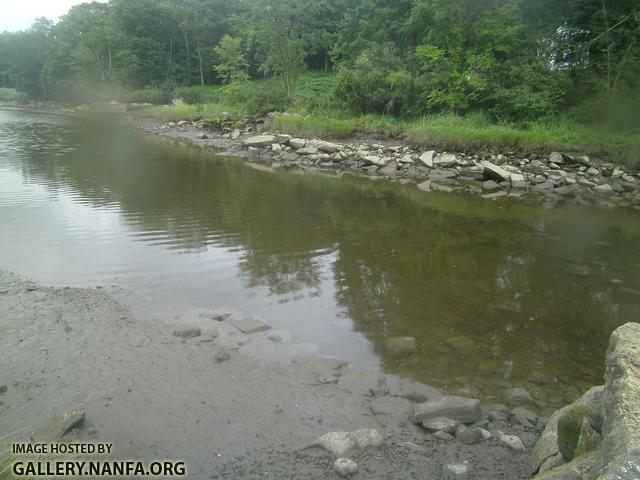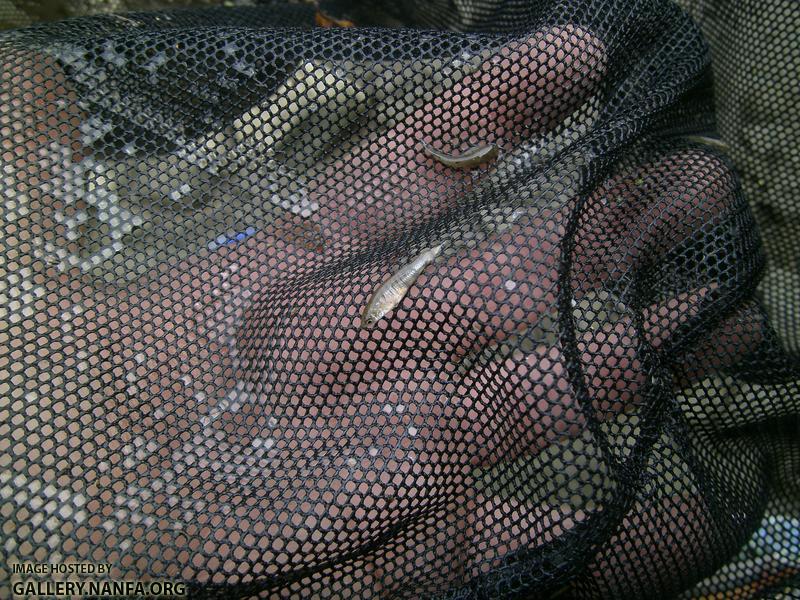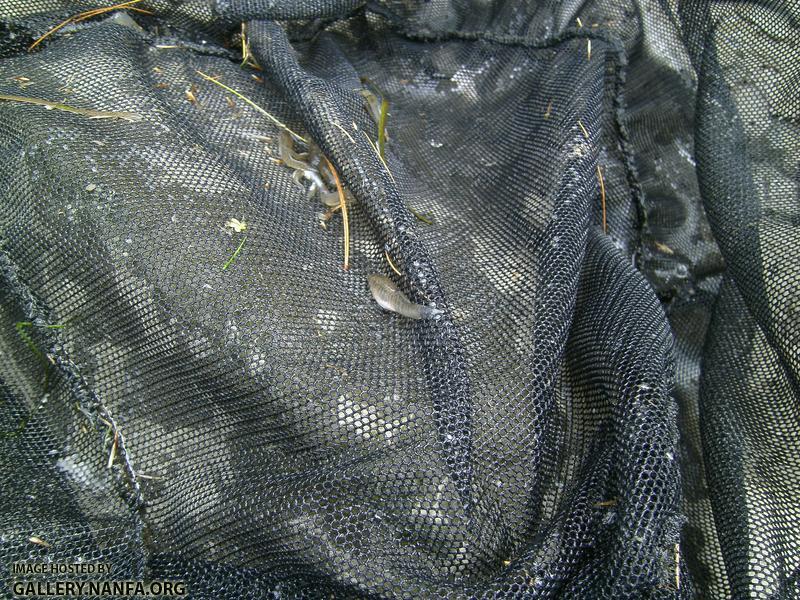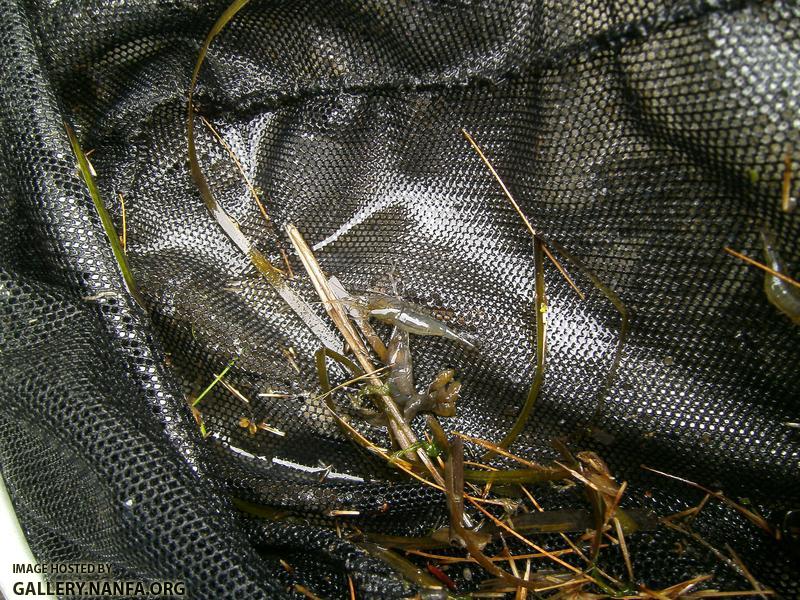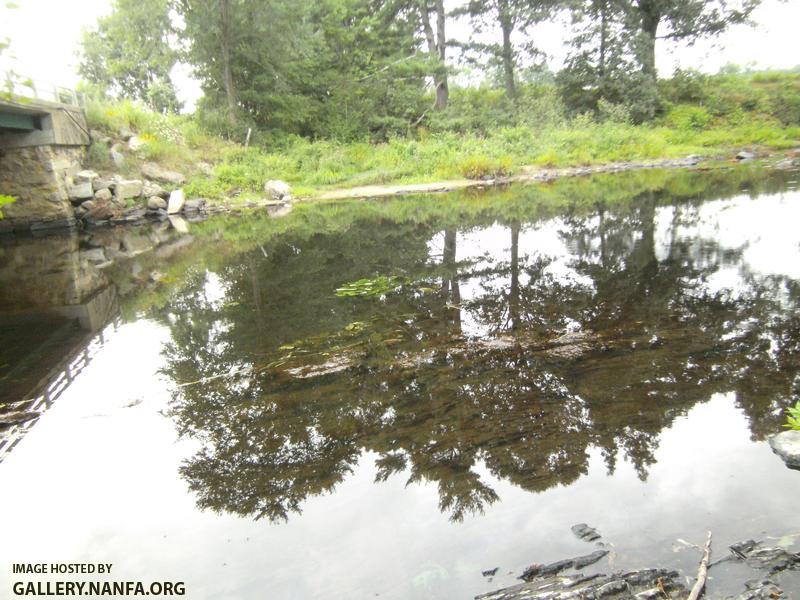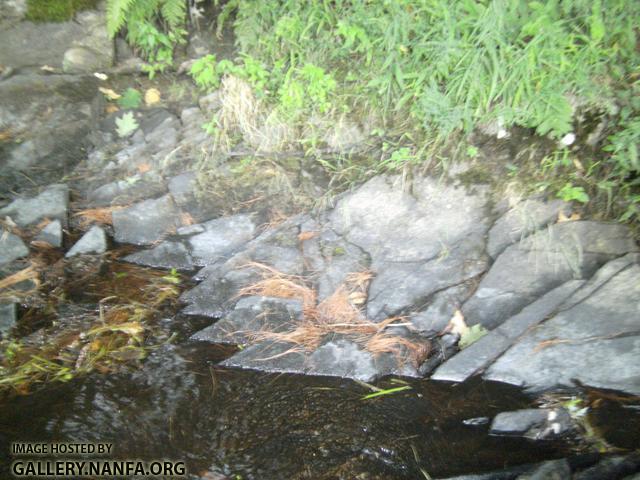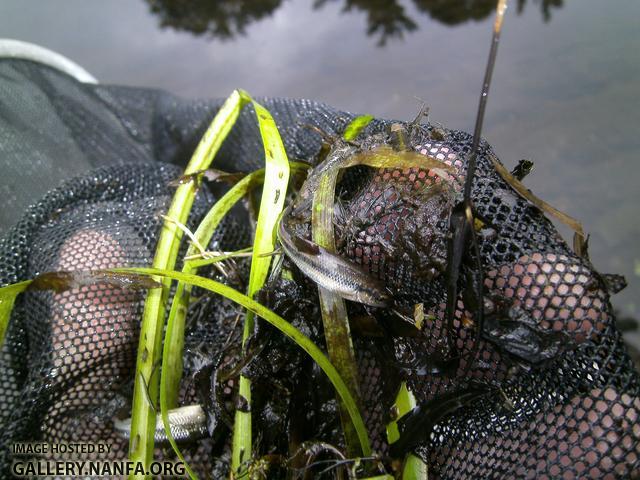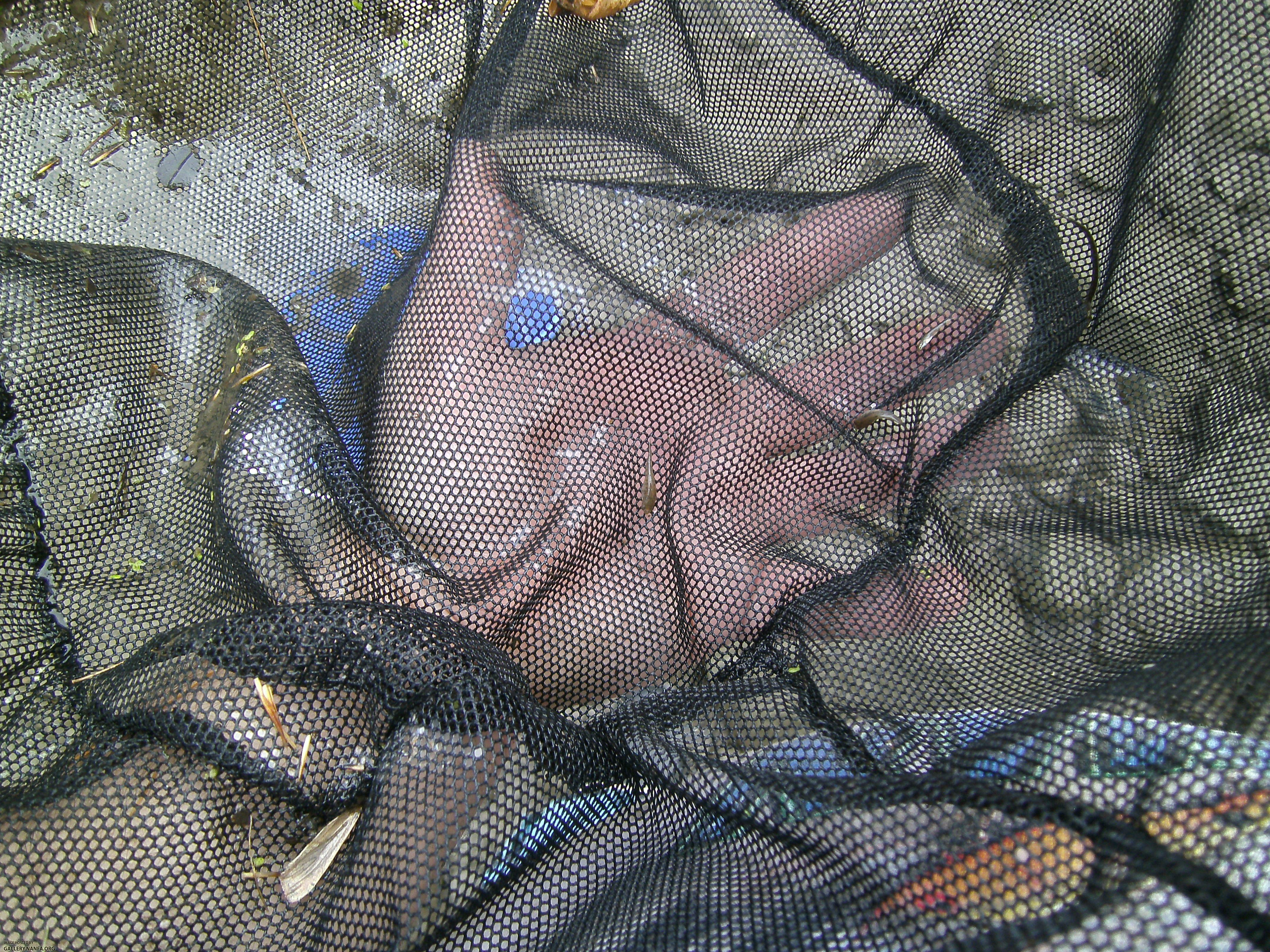The Oyster River was on my list since I read that Banded Sunfish and Swamp Darters were not just present their but abundant. The fact that it also has the bridal shiner (a threatened species who appears on lists of many coastal and merrimack drainage rivers) and the endagered brook lamprey made it sound like a rich reserve for rare fish and a perfect place to start a search for banded sunfish, swamp darter, and redfin pickerel.
I forgot my research notes on spots to check so I decided to head to Mill Pond on the Oyster River as the three species I seek are pond centered. This pond was formed by a dam and conveniently located in a park.
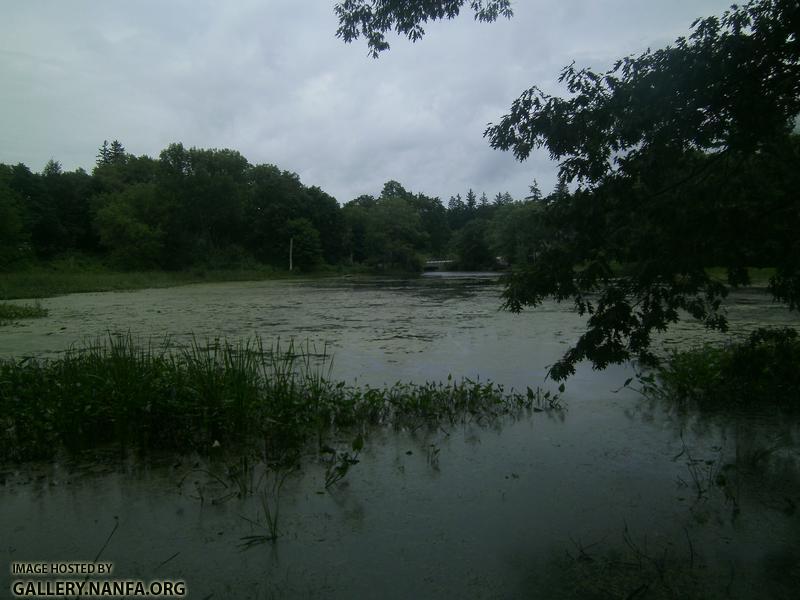
It was raining on and off my day giving my sealife camera a new role of inclemant weather camera, going in its case when rain threatens and coming out of it when it clears.
This area was rich in cattails, lilly pads, pickerelweed, and duckweed. My lower legs were green with duckweed on leaving the water,a
The first fish I caught was a small american eel. A first in NH for me (I caught them with Justin in Mass before). Oddly enough despite being in my area of the state and me hook and line fishing since I was a kid I never caught one in my state before this. It was tough to keep the little guy in the net to photograph as he kept trying to slither out.

I next caught a sunfish, not sure if it is another unmarked banded or a bluegill, I am leaning a bit more towards 'gill
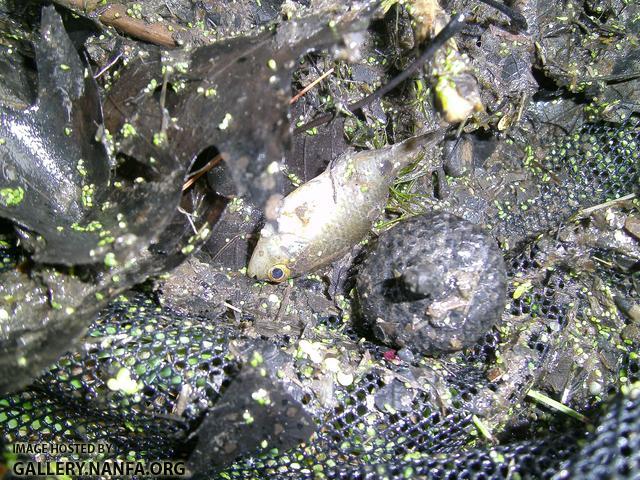
I decided to head up a bit and found a promising area but didn't enter the water as the bank was a bit steep and their were mute swans which I heard were agressive. (I did take a photo of one of the swans, also their are female two mallards hidden in the grass). One of the oddest sights I saw was a mallard rushing aggressively at a swan, which didn't seem to care. The image was resized smaller by the photo album so they'd likely be tough to see.
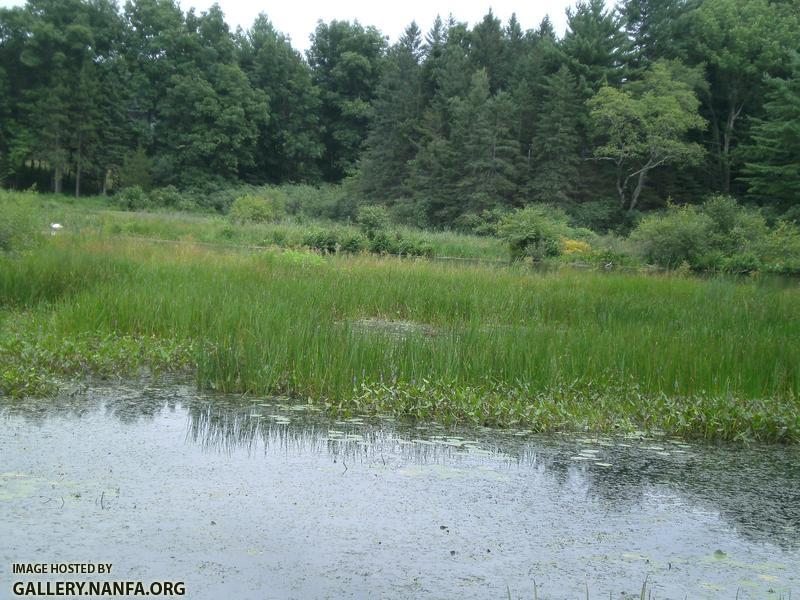
With only one sunny, no darters, and the only pickerel being the kind with pointy leaves and purple flowers I decided to check out the downstream side of the dam in hopes of finding different fish, What I found was far more different than I expected.


